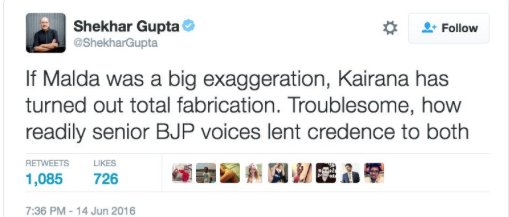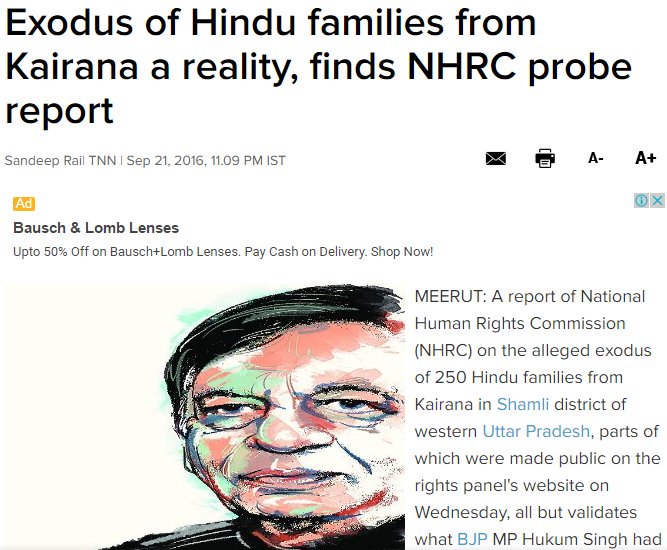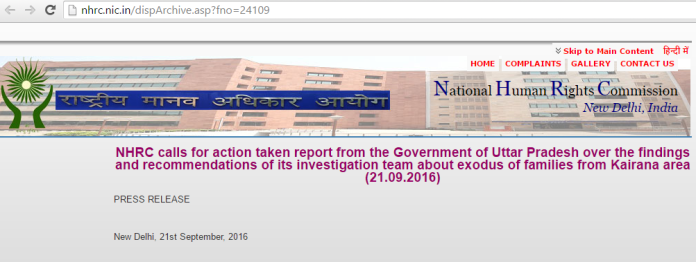OpIndia.com’s last post on the Uri attack, ended with this line:
At the moment, we must just trust our army to do what is needed, “at a time and place of their choosing.”
It was written in the backdrop of the reported counter attack which had taken place, but which was denied by the Indian army. Given the fact that no one could ever say whether it was a covert strike or it never happened, it was wise for all to just wait. Wait for the army to give it back. And now that time has come.
After more than two years in office, Prime Minister Narendra Modi has finally given shape to what the now National Security Advisor (Ajit Doval), had once famously described as the “Offensive defence” tactic of dealing with the Islamic Republic of Pakistan. The surgical strike in Pakistan Occupied Kashmir (POK) should be celebrated, for it displays India’s righteous resolve to inflict measured punishment, on those who seek to bleed India with terrorism. At the same time, attempt should be made, to place this strike, within the ambit of a wider foreign policy doctrine, which India has clearly adopted, in the last couple of months- one that has “Offensive Defence” written all over it.
The Diplomatic Offense
Ever since the Uri army base was attacked, Prime Minister Modi has stayed away from knee-jerk reactions, and mindless chest-thumping. He has stayed in the background, and allowed the experts to do their job. A level-headed Sushma Swaraj was sent to expedite Pakistan’s “diplomatic isolation” – at the annual session of the United Nations General Assembly. As it turned out, the duo of a junior diplomat Eenam Gambhir, and India’s External Affairs Minister was enough to give voice to reason- something that was totally missing in the speech of the Prime Minister of Pakistan.
Any other government, and this would have been it. But little did Pakistan know that India had given up “strategic restraint”, in favour of “strategic retaliation”, and indeed “strategic isolation”. Top diplomats orchestrated the SAARC pull-out, by countries that matter, in the region. What is important to note is that the letters given by the likes of Bangladesh, and Afghanistan hold Pakistan just as guilty of spreading terrorism in their own countries. Therefore, what was “visible” was not arm-twisting by India, but the message that South Asia’s regional body- as a whole, had no place for Pakistan, given its establishment’s love affair with terrorism.
As far as the issues of Most Favoured Nation (MFN) status, and Indus Water Treaty (IWT) are concerned, the Prime Minister continues to be briefed by experts from the concerned Ministries. Chances are that the MFN status will be revoked. Business lobbies have also welcomed the prospect of such a revocation. So far as the IWT is concerned, India has announced its intent to scale up construction of dams, and move towards ending the unilateral concession, which it had granted to Pakistan. In doing so, India will not violate international law, for it will only be claiming its rightful share, as per the Treaty. Other options relating to a review of the Treaty itself, are also being considered.
Another major objective of our “diplomatic offense” has been responding to interference in Kashmir, by giving voice to the freedom struggle of Balochistan. In doing so, India has made it clear that the great game is not limited to Kashmir anymore. Open endorsement to the freedom struggles of Balochistan, Pakistan Occupied Kashmir, and Gilgit-Baltistan was not made in passing. It is a discourse that India has held on to. Perhaps the first major step will be granting of asylum to Brahamdagh Bugti, whose application has been sent to Intelligence Bureau by the Home Minister, for vetting purposes. The final call will be taken by the Union Cabinet, soon enough.
The Military Offense
This is obviously not the first time that the Line of Control (LOC) has been crossed, but this is surely the only time (in recent memory) when the crossing has produced tangible results. This highlights the conviction that Prime Minister Modi has displayed. Gen (Retd) Bikram Singh, the former Chief of Army Staff, had the following words to say, in a TV interview:
“These kinds of operations have been done in the past. I’ll be honest with you .But, the scale at which it has happened, the political will after which it has unfolded is something to be appreciated. Earlier, it was left to the military to carry out. But this time the military operations have been supported entirely. I would say, they’ve been steered by political will, by political agenda.”[1]
The Indian Army, after Uri, clearly said that they reserve the right to retaliate at a time, and place of their choosing. The Prime Minister gave them the operational freedom, and the go-ahead to execute it as per their wish. Even so, the strike was a limited one, and conducted in a disciplined manner. The strike was on terrorists, and not on the military. The objective was not to take back the territory, but to send the message that such open attempts at infiltration will not be tolerated. What were the terrorists doing 3 kilometres away from the LOC, if not waiting for the opportune moment to infiltrate, quite possibly with the aid of cover firing from Pakistan Army? Such terrorist launch pads deserve to be targeted. Justice has been served, to the martyrs of Uri attack.
At the government level, immediate evacuation of border villages was ordered. This was done, quite predictably, to ensure that no civilian casualties are incurred, should Pakistan provoke India again, to save its face.
“Offensive Defence”
All this has been done, after engaging in more than two years of regular diplomacy. Attack after attack, PM Modi continued to engage. He paid a visit to Pakistan, and even laid a red carpet for a visit by their intelligence officers. All such efforts were subject to widespread condemnation by his own vote-bank, and yet he pursued them. This has helped, for the world can now see through the designs of the rogue state, which Pakistan is. India has converted its diplomatic setback into an advantage- one that it will now use to further justify its “offensive defence” doctrine.
The response of the international community illustrates that the world respects India’s choice of retaliation. In the statement by the United States (US), there was no condemnation, or censure of India’s strike. That NSA Doval was in touch with his American counterpart- Susan Rice, is further proof of the growing realisation that India has had it enough. Reports further specify that China, Turkey, and Saudi Arabia have so far refused to issue statements de-legitimising India’s strike.[2] The fact that Pakistan is still giving contradictory statements regarding the surgical strike is causing further damage to whatever is left of its credibility. Till the time it doesn’t confirm, its so-called allies will have nothing to support it for. And if it does decide to confirm, it will end up implicating itself as a terrorist state.
The “boys” in Uniform have played well. And so has the man himself. Well done, Mr. Prime Minister.
[1] https://www.youtube.com/watch?v=A5xy4R9VeIk
[2] http://timesofindia.indiatimes.com/world/us/Surgical-strikes-US-slams-Pakistan-for-cross-border-terror-urge-calm-and-restraint/articleshow/54593508.cms
























